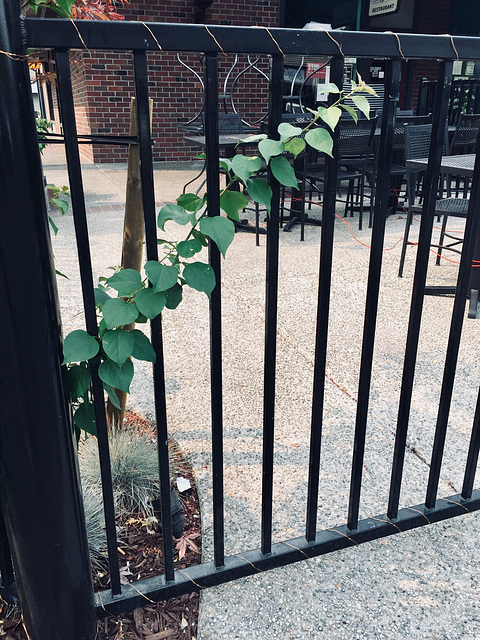Frühlingsbote vorm Zaun - HFF!
HFF
The Last dinosaur egg-HFF for everyone 26-4-2024
Ponte Napoleonico del 700 con la "crouza" - HFF
Happy Fence Friday!
Cosmatesque floor.
Johannes Matthies
Holzschuppen an der Reeperbahn (2xPiP)
HFF voor iedereen....
HFF IS CLOSED, SEE YOU NEXT FRIDAY
WELCOME TO HFF - START POSTING ON FRIDAY YOUR TIME…
Heavens Door
Plot před Vltavou
Vermisst das hier jemand? HFF!
HBM champêtre
197/5 A - Pont Hafren Newydd
Sun, Sea and Shadows
HFF
HFF
HFF: Stagecoach East 21306 (BF65 WKV) on the Cambr…
HFF une bonne perspective :-)
HFF - Wasserstraßenkreuz Minden
HFF garde-corps
Cross Bones Graveyard 1
It blooms!
HFF from anywhere
eingezäunt ...
Frühlingswetter
HFF from Cromer
HFF - Hase im Garten (PiP)
"Lasst uns raus!" :-)
Full Moon Rising
HFF: Durchgang zum Garten
HFF - Lavabecken in La Caleta
HZFPFF!
Happy Fence Shadow Friday !
Bei den Landungsbrücken-HFF
An der Verbindungsbahn
HFF.............from Spurn Point
HFF ~ Boston fire-escape
HFF
H F F...
HFF
Ziegen bei ihrer Mittagspause am Illmensee
Location
Keywords
Authorizations, license
-
Visible by: Everyone -
All rights reserved
-
54 visits
Creeper


Twining is the climbing mechanism in almost 50% of all neotropical climbers, being observed in 4291 species, followed by tendrils (1931), simple scrambling (1333), adhesive roots (1062), prehensile branches (322), twining petioles (103), hooks and grapnels (26), and twining peduncles or inflorescences
HFF to all and a great week end
HFF to all and a great week end
Diana Australis, Trudy Tuinstra, sea-herdorf, tiabunna and 4 other people have particularly liked this photo
- Keyboard shortcuts:
Jump to top
RSS feed- Latest comments - Subscribe to the comment feeds of this photo
- ipernity © 2007-2024
- Help & Contact
|
Club news
|
About ipernity
|
History |
ipernity Club & Prices |
Guide of good conduct
Donate | Group guidelines | Privacy policy | Terms of use | Statutes | In memoria -
Facebook
Twitter

But figuring out how to match climbing plants with the right kind of support leaves many gardeners baffled. Why won't pole beans and tomatoes climb up a lattice frame? Why won't sweet peas and clematis climb a pole?
The answer is that climbing plants climb in particular ways: some wrap, some adhere, and some curl. Here's how to recognize which plants do what:
How Plants Climb: Tendrils
Peas are a good example of a plant that uses tendrils to climb. Tendrils are skinny, wiry structures along the plant's stem that actually reach around in the air until they come into contact with something they can grab. Once contact is made, the tendril curls, forming a coil that allows the plant to adjust the degree of tension or pull on the support.
There are two kinds of tendrils. Stem tendrils (which passionflowers and grapes have) are shoots that grow out of the stem. Leaf tendrils (which peas have) look very similar, but the tendrils are actually modified leaves that emerge from a leaf node.
Like a rock climber scaling the face of a mountain, plants that have tendrils need handholds in the form of horizontal supports. Netting works well for plants with tendrils, as long as the mesh is more than 2" square. I once tried growing sweet peas on some bird netting that we had lying around and the peas refused to take hold.
Branches are a popular material for supporting tendril-climbers. Just make sure that branches are brushy—with lots of small side shoots—and not smooth, vertical sticks. Horizontal strings attached to posts or bamboo poles are ideal. Just don't position the strings more than about 4 inches apart or the newest set of tendrils may not be able to reach the next level of string. Also, because most tendrils are only about an inch long, they need to wrap around something thin (like string or wire) that's no more than about 1/4 inch in diameter.
www.gardeners.com/how-to/how-plants-climb/5373.html
HFF and a good weekend
wish you a happy weekend:)
HFF and have a good weekend
Erich
I wish you a wondrous week!
Sign-in to write a comment.